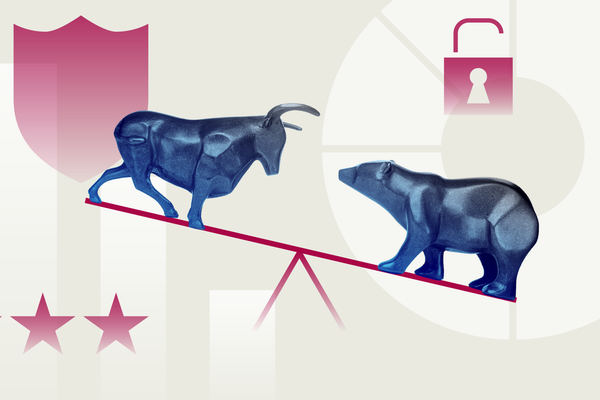
Financial markets are going through one of the most complicated periods in recent history. Investors have been grappling with the fallout of Russia’s invasion of Ukraine, the energy crisis, the spike in inflation, and rising interest rates.
Red Across the Board
In 2022, the Morningstar Global Markets TR Index fell 10.4%, meanwhile the Morningstar Europe TR Index lost 17.7%, the Morningstar Canada Index is down 13.55% and the Morningstar Emerging Markets shed 13%. All international stock exchanges have suffered severe setbacks.
Bonds, traditionally considered a safe haven, have come out even more battered: the Morningstar Eurozone Core Bond Index, for instance, lost 15% of its value for the year-to-date. In the UK, the issue is pronounced, following Kwasi Kwarteng's mini-budget.
For the first time since 1994, the waves of selloffs hit stocks and bonds at the same time, and the trusty 60/40 portfolio, a long time cornerstone of diversification, went through one of its worst periods ever.
This year, markets have also experienced increased two-way volatility in stocks, with sharp moves higher or lower (so far in 2022 the S&P 500 experienced 14 days with more than 2% moves, which is second only to 2020 in the last decade), which historically tend to signal that more volatility might be in store for stocks.
How to Keep Your Head
When faced with this stuff, the most important (and difficult) thing is to keep one’s nerve.
Knowing how to handle price fluctuations is at least as important as choosing the right investment. To be honest, most investors are unable to judge their risk tolerance objectively; they typically feel more resilient to risk in good times and suddenly become risk averse after periods of sustained losses such as those experienced recently.
Focusing on short-term movements inappropriately mixes the concepts of risk and volatility. Understanding the difference between the two, and focusing on the former and not the latter, is the key to making sure you achieve your financial goals.
What’s the Difference Between Risk and Volatility?
At first glance, it might seem the distinction between risk and volatility is purely academic and makes little difference to real-world investors. In fact, the two terms are often used almost interchangeably in the field of financial communication. It is also true that the term "risk" can refer to different concepts.
As investors, however, it is useful to create a mental distinction between volatility and risk. What are the key differences? Volatility indicates changes in the price of a security, portfolio or index, either upwards or downwards. Volatility, therefore, is not in itself bad news; it is theoretically possible (though unlikely) to own an investment that is very volatile but has so far only gone in one direction: up.
"If you are not going to sell, volatility is not a big problem and in fact can even be an ally, allowing you to buy additional shares in an investment that fits into your financial plan at a much lower price," explains Christine Benz, Morningstar’s director of personal finance.
"The most intuitive definition of risk, on the other hand, is the possibility that you will not be able to meet your financial goals or honour your obligations, or that you will have to rethink your goals because circumstances have changed."
From this point of view, risk should be the real concern for investors, not volatility. However, it is easy to see how the two terms merge. If you have a short time horizon and are in a volatile investment, what might simply be volatile for one investor can become downright risky for another. This is because there is a real risk you might have to sell and make a loss.
How to Cope with Risk and Volatility
So how can investors focus on risk while putting volatility aside?
The first step is to know that volatility is inevitable and if, you have a long enough time horizon, you will be able to use it to your advantage. The use of a dollar-cost averaging strategy can help to ensure that you can buy shares in a variety of market situations (however, it is important to be fully aware of the pros and cons of such a practice).
Traditionally, diversifying one’s investments across asset classes and investment styles can go a long way towards making your portfolio less volatile and your (financial!) life easier.
"Another good practice is to identify real risks: namely, to identify your financial goals and the possibility of not achieving them," Benz says.
"For most of us, a comfortable retirement is a key goal. For those with children, saving for their education or their first home might be a goal. By identifying goals and risks one by one, you can prioritise and anticipate what you would do if you don't achieve them."
Finally, it is always a good idea to keep some of your savings in cash. In extremely uncertain times like the current one, the cash part of our portfolio could save you from having to liquidate investments that are performing badly to meet important expenses or to repay a possible debt. Liquidity can also give the possibility, for those who feel up to it, to enter the market by taking advantage of sharp falls in order to buy assets at a discount.









.png)


















